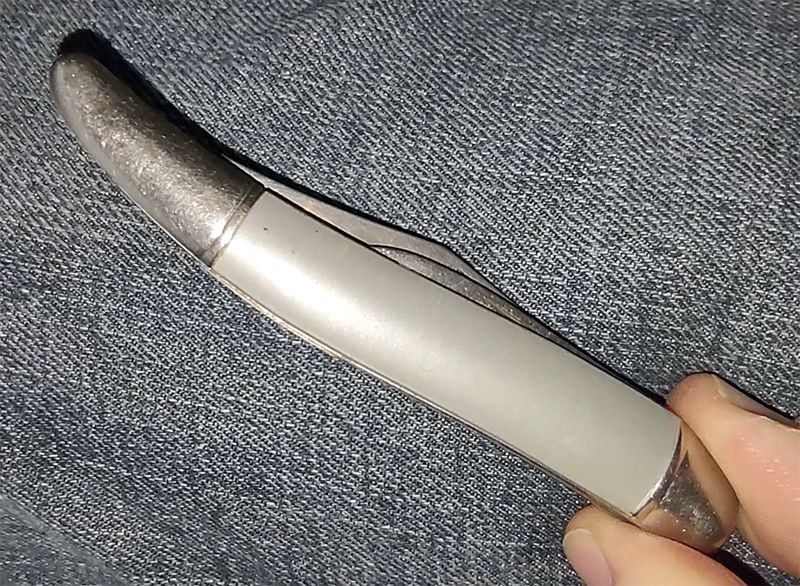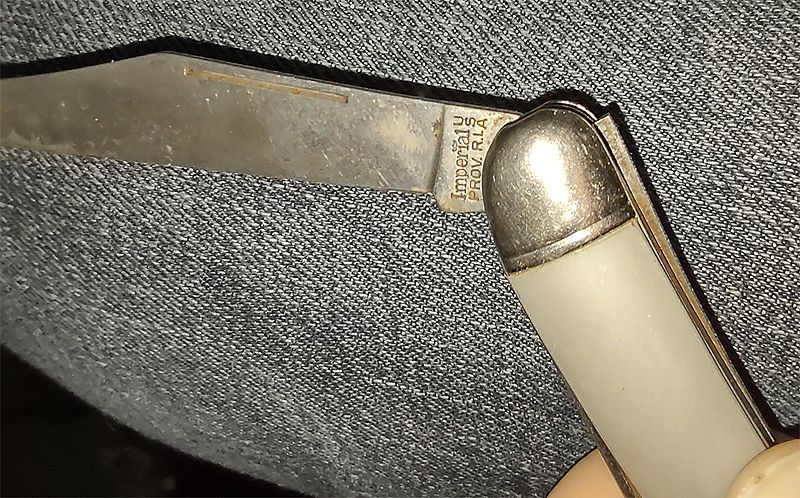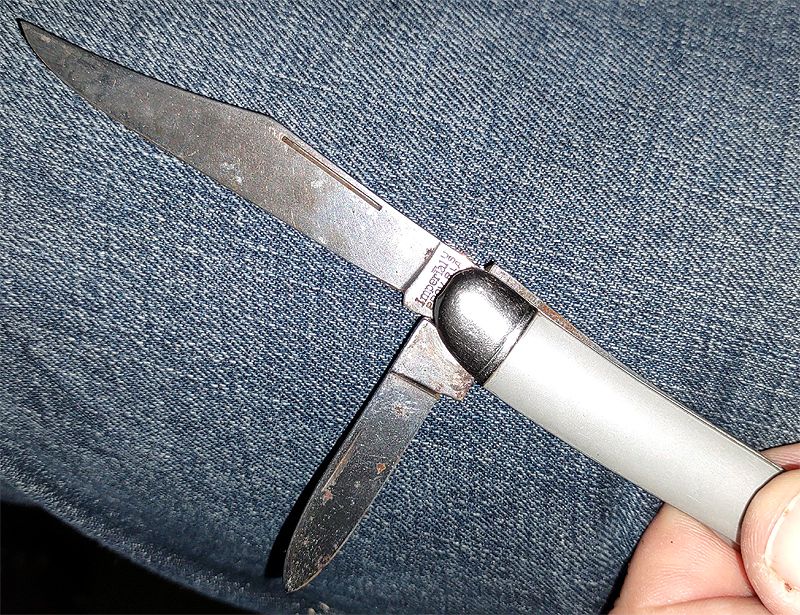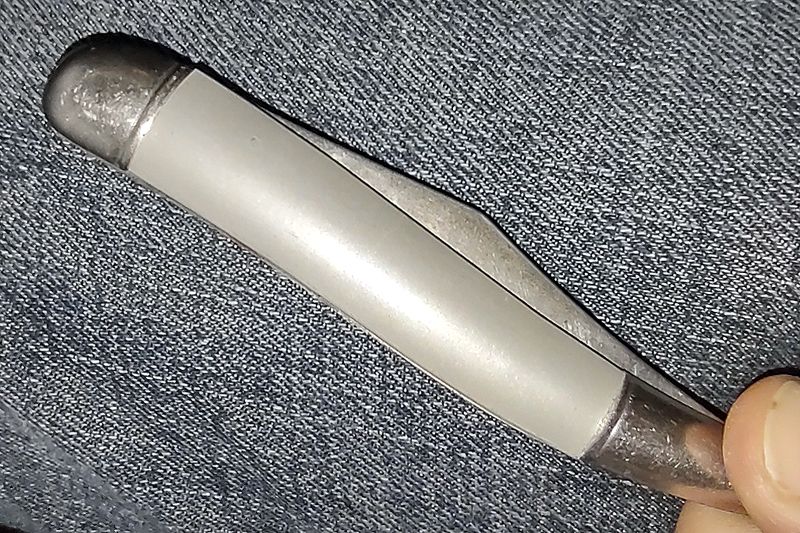- Joined
- Feb 2, 2007
- Messages
- 30
Hello,
I found the knife pictured for $3 at a thrift shop. It seemed in good shape so I bought it.
Thing is, I'm not too familiar with Imperial. The few I've seen all have yellow scales. Are the gray ones anything special?
I'd like to clean this up, but if there's collector value I'll just stabilize the metal and keep it in the collection.
Anything you can tell me would be great. Thanks!




I found the knife pictured for $3 at a thrift shop. It seemed in good shape so I bought it.
Thing is, I'm not too familiar with Imperial. The few I've seen all have yellow scales. Are the gray ones anything special?
I'd like to clean this up, but if there's collector value I'll just stabilize the metal and keep it in the collection.
Anything you can tell me would be great. Thanks!




